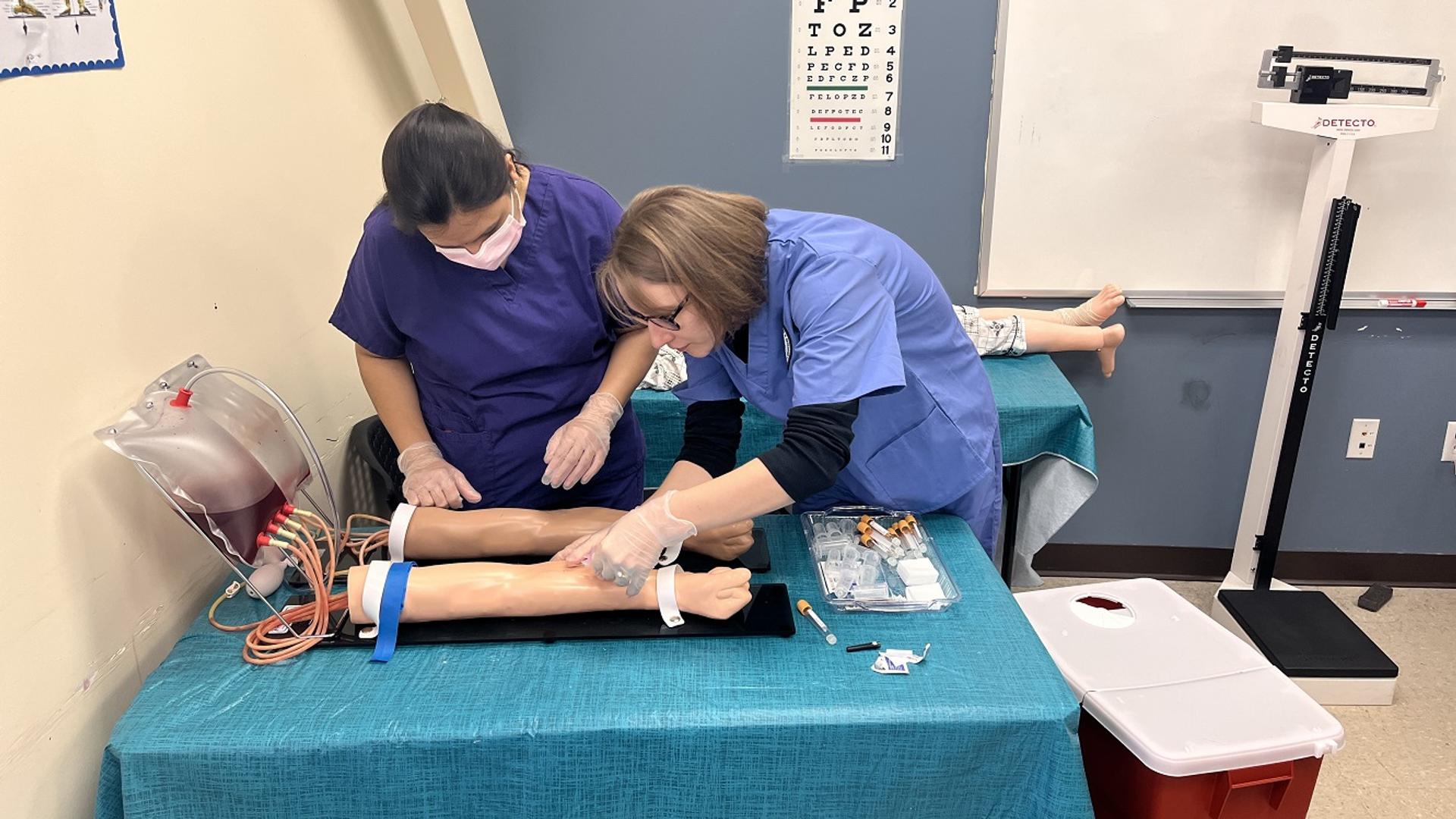The Ultimate Guide To Northeast Medical Institute - New Haven Campus Phlebotomy Course & Cna Class
The Ultimate Guide To Northeast Medical Institute - New Haven Campus Phlebotomy Course & Cna Class
Blog Article
6 Easy Facts About Northeast Medical Institute - New Haven Campus Phlebotomy Course & Cna Class Explained
Table of Contents4 Easy Facts About Northeast Medical Institute - New Haven Campus Phlebotomy Course & Cna Class DescribedNortheast Medical Institute - New Haven Campus Phlebotomy Course & Cna Class Can Be Fun For EveryoneSome Of Northeast Medical Institute - New Haven Campus Phlebotomy Course & Cna ClassHow Northeast Medical Institute - New Haven Campus Phlebotomy Course & Cna Class can Save You Time, Stress, and Money.Northeast Medical Institute - New Haven Campus Phlebotomy Course & Cna Class Can Be Fun For EveryoneOur Northeast Medical Institute - New Haven Campus Phlebotomy Course & Cna Class PDFs
Nonetheless, using such gadgets need to be come with by other infection avoidance and control practices, and training in their use. Not all safety and security devices are relevant to phlebotomy. Prior to selecting a safety-engineered gadget, individuals should extensively examine readily available devices to establish their suitable use, compatibility with existing phlebotomy practices, and efficacy in safeguarding personnel and individuals (12, 33).For setups with low resources, cost is a motoring factor in procurement of safety-engineered tools. Where safety-engineered tools are not offered, skilled usage of a needle and syringe is appropriate.
labelling); transportation problems; interpretation of outcomes for clinical monitoring. In an outpatient division or center, offer a committed phlebotomy workstation containing: a clean surface with two chairs (one for the phlebotomist and the various other for the person); a hand clean container with soap, running water and paper towels; alcohol hand rub. In the blood-sampling room for an outpatient division or center, provide a comfortable reclining couch with an arm rest.
Northeast Medical Institute - New Haven Campus Phlebotomy Course & Cna Class Fundamentals Explained
Make certain that the indications for blood tasting are clearly specified, either in a created protocol or in recorded guidelines (e.g. in a research laboratory type). In all times, follow the methods for infection prevention and control listed in Table 2.2. Infection prevention and control methods. Accumulate all the equipment required for the treatment and place it within risk-free and very easy reach on a tray or trolley, making certain that all the products are plainly visible.
Present yourself to the individual, and ask the individual to mention their full name. Check that the research laboratory kind matches the individual's identity (i.e. match the person's details with the laboratory type, to ensure accurate recognition).
Make the individual comfortable in a supine setting (if feasible). Place a clean paper or towel under the client's arm. Discuss the examination to be done (see Annex F) and acquire spoken approval. The individual has a right to reject a test at any type of time before the blood sampling, so it is very important to guarantee that the patient has actually comprehended the procedure.
Top Guidelines Of Northeast Medical Institute - New Haven Campus Phlebotomy Course & Cna Class
Prolong the patient's arm and evaluate the antecubital fossa or lower arm. Find a vein of a good dimension that shows up, straight and clear. The diagram in Area 2.3, shows typical placements of the vessels, however numerous variants are feasible. The median cubital capillary lies between muscle mass and is usually the most easy to pierce.
DO NOT place the needle where veins are diverting, due to the fact that this increases the chance of a haematoma. The vein ought to show up without applying the tourniquet. Finding the blood vessel will certainly help in identifying the appropriate size of needle. Apply the tourniquet about 45 finger widths above the venepuncture site and re-examine the vein.
Samplings from main lines bring a threat of contamination or incorrect laboratory test outcomes. It is acceptable, but not excellent, to draw blood samplings when first introducing an in-dwelling venous tool, before linking the cannula to the intravenous liquids.
Northeast Medical Institute - New Haven Campus Phlebotomy Course & Cna Class - The Facts
Permit the area to completely dry. Failing to permit enough contact time increases the threat of contamination. DO NOT touch the cleaned up website; in certain, DO NOT position a finger over the vein to guide the shaft of the subjected needle. It the site is touched, repeat the sanitation. Do venepuncture as adheres to.
Ask the patient to form a fist so the veins are extra prominent. Get in the vein swiftly at a 30 level angle or less, and continue to present the needle check my reference along the blood vessel at the simplest angle of entry - PCT Training. As soon as adequate blood has been collected, launch the tourniquet BEFORE taking out the needle
Not known Details About Northeast Medical Institute - New Haven Campus Phlebotomy Course & Cna Class
Take out the needle gently and use mild pressure to the website with a clean gauze or completely dry cotton-wool ball. Ask the individual to hold the gauze or cotton wool in place, with the arm extended and raised. Ask the patient NOT to flex the arm, because doing so creates a haematoma.

7 Easy Facts About Northeast Medical Institute - New Haven Campus Phlebotomy Course & Cna Class Explained
Where possible, keep the tubes in a rack and move the shelf in the direction of you - https://www.reverbnation.com/artist/marvingordon. If the sample tube does not have a rubber stopper, infuse exceptionally gradually into the tube as lessening the stress and speed made use of to transfer the sampling lowers the threat of haemolysis.

Report this page